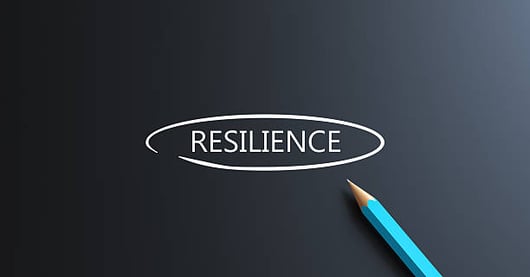
Building Resilience Through Restructuring: How Food & Beverage Supply Chains Can Adapt and Thrive Amid Disruption
The Food and Beverage (F&B) manufacturing industry faces constant pressure to deliver consistent quality, maintain inventory balance, and respond swiftly to consumer trends and supply disruptions. From fluctuating raw material availability to stringent regulatory compliance and climate-related events, the modern supply chain is more vulnerable than ever. For Supply Chain Managers, resilience has shifted from being a strategic advantage to a non-negotiable necessity.
Restructuring supply chains for resilience is not just about risk mitigation—it’s about positioning your business to maintain operations, meet demand, and evolve in the face of uncertainty.
In this blog, we’ll explore what resilience looks like in the F&B supply chain, how to restructure for it, and the critical role of Advanced Planning and Scheduling (APS) tools—like PlanetTogether—when integrated with ERP systems such as SAP, Oracle, Microsoft, Kinaxis, or Aveva.
Understanding the Imperative: Why Resilience Now?
Several converging factors are redefining how supply chains must operate in the F&B sector:
Pandemic-era aftershocks exposed over-reliance on global suppliers.
Extreme weather events increasingly threaten agricultural inputs.
Changing consumer preferences demand agility in formulation, packaging, and distribution.
Geopolitical instability and tariff changes influence sourcing costs and availability.
Sustainability mandates are pushing for more ethical, transparent operations.
These dynamics call for a new supply chain structure—one that is decentralized, digitally connected, data-driven, and capable of adapting in real time.

Five Pillars of Supply Chain Resilience in F&B Manufacturing
To build resilient operations, Supply Chain Managers must focus on these five strategic pillars:
End-to-End Visibility
Without full transparency, disruptions cannot be predicted or mitigated. Resilient supply chains operate with end-to-end visibility—from farm to fork.
Integration spotlight: When PlanetTogether APS is integrated with ERPs like SAP or Microsoft Dynamics, it enables synchronized, real-time data flows across procurement, production, and logistics. This enhances the accuracy of forecasts, supports rapid replanning, and eliminates blind spots across your value chain.
Dynamic Scenario Planning
Instead of static planning models, modern supply chains require dynamic simulation capabilities to answer “what if” questions quickly.
By leveraging PlanetTogether’s simulation tools, planners can model the effects of raw material shortages, transportation delays, or demand spikes. When integrated with Oracle or Kinaxis, this real-time modeling allows for data-driven scenario comparisons and proactive decision-making.
Localized and Diversified Sourcing
Reducing risk by diversifying supplier bases and sourcing closer to production facilities minimizes dependency on any single source or region.
APS platforms help identify sourcing risks early by analyzing supply lead times and constraints. Through PlanetTogether’s integration with Aveva, for instance, managers can cross-reference production plans with supplier reliability data to make informed procurement adjustments.
Inventory and Production Flexibility
Traditional JIT (Just-In-Time) systems have shown vulnerabilities in today’s unpredictable market. A more resilient strategy involves holding strategic safety stocks and enabling flexible production lines that can pivot quickly.
PlanetTogether’s scheduling engine, when integrated with SAP S/4HANA, allows Supply Chain Managers to optimize stock levels based on real-time demand and material availability. It helps balance inventory carrying costs with the need for responsiveness.
Automated and Agile Decision-Making
The future of resilience lies in automation, not manual reaction. Agile, AI-powered planning tools can re-sequence production, shift resources, and reassign capacity in moments—not days.
PlanetTogether’s APS platform, especially when integrated with Microsoft Power BI and Dynamics, supports KPI monitoring, alerts, and AI-driven suggestions, giving managers agility and control over fast-moving scenarios.

Restructuring the F&B Supply Chain: Step-by-Step Framework
Resilience doesn’t come from a single upgrade. It is built through deliberate restructuring across operations. Here's how to begin:
Step 1: Conduct a Vulnerability Audit
Identify where your supply chain is most at risk—geographically, technologically, or operationally. Evaluate supplier concentration, dependency on single transportation modes, and lack of redundancy.
Step 2: Integrate APS with ERP
True resilience requires synchronized data and systems. Integrating PlanetTogether APS with your core ERP system (SAP, Oracle, Kinaxis, etc.) creates a single source of truth and real-time planning capability. This integration enables:
Advanced constraint-based scheduling
Scenario analysis and simulations
Inventory optimization
Visibility across multi-plant operations
Step 3: Redesign Network Architecture
Move from centralized models to more regional, flexible networks. This might involve localizing key suppliers, expanding multi-sourcing contracts, or setting up distributed warehousing.
Step 4: Enable Predictive Planning
Use predictive analytics to anticipate disruptions—weather, transportation bottlenecks, demand spikes—and prepare buffers or alternate plans in advance.
PlanetTogether, with its AI-enhanced scheduling engine, can run simulations based on historical and live data. When tied into ERP systems like Kinaxis RapidResponse, it empowers supply chains to proactively pivot—not just react.
Step 5: Build a Culture of Resilience
Tools and tech are only part of the equation. Empower cross-functional teams to collaborate on real-time data, encourage proactive problem-solving, and reward adaptability.
The future of food and beverage manufacturing depends on a fundamental shift from efficiency-only supply chains to resilient, digitally connected ones. While the transition requires investment, the ROI is measured not only in cost savings but in survival, stability, and sustained growth.
PlanetTogether, when integrated with leading ERP platforms, is more than just a planning tool—it’s the strategic backbone for resilient supply chain operations. For Supply Chain Managers navigating the next wave of disruption, now is the time to restructure, rebuild, and rise.
Are you ready to take your manufacturing operations to the next level? Contact us today to learn more about how PlanetTogether can help you achieve your goals and drive success in your industry.


